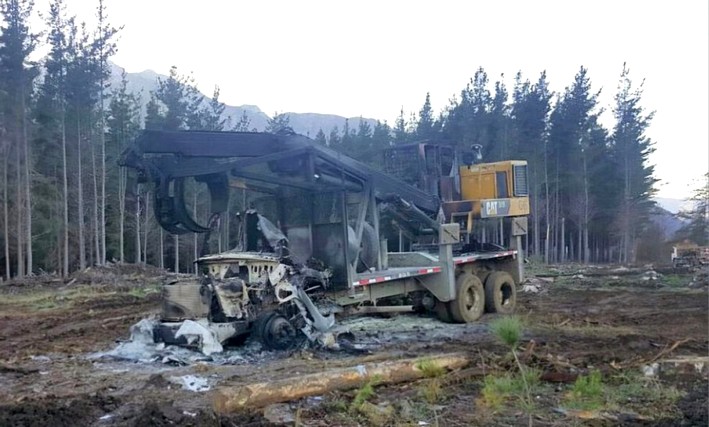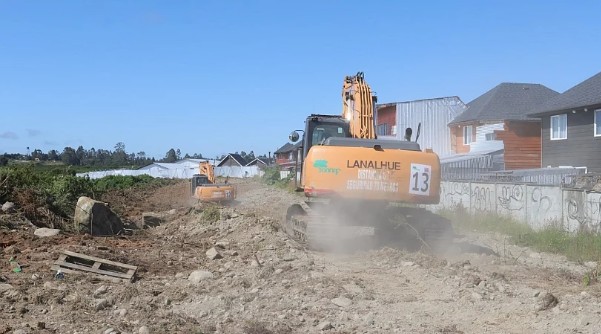Archaeological Findings: A Soda Cap or a Mummy Equally Halt Investments in Chile (and the Business Behind It)
Current law does not adequately distinguish between a minor find and a significant discovery, such as a mummy or Inca relics.
The processing of investment projects in Chile faces serious challenges when archaeological findings emerge during construction. Current regulations require an immediate halt to any project until the value of the discovery is determined, leading to prolonged delays and high costs, affecting both companies and citizens.
The Faculty of Economics and Business (FEN) at the University of Chile organized the discussion "Tensions in Economic Progress Facing New Challenges: Heritage Protection," featuring Rosario Navarro, president of Sofofa; Louis de Grange, former president of Metro de Santiago; Emilio La Cerda, former Undersecretary of Cultural Heritage; and Óscar Acuña, former executive secretary of the National Monuments Council.
Current law does not adequately distinguish between a minor find and a significant discovery, such as a mummy or Inca relics. This lack of differentiation creates slow and costly bureaucracy. José de Gregorio, dean of FEN, stated that in Chile today, "a Coca-Cola cap or a mummy can stop a project." The key, according to De Gregorio, is properly assessing the cost and benefit of delaying major projects, like a metro line in vulnerable areas, where delays impact thousands of people.
Businessman Juan Carlos Latorre, one of the seminar attendees, shared a real case of a 10-hectare project stalled for months just to assign a contractor. The process took even longer because the secretary responsible for the paperwork at the National Monuments Council was on maternity leave, forcing them to wait.
Excavations
Once the contractor was assigned, 400 excavations were requested to search for potential findings. After six months and high costs, nothing significant was found, but the contractor proposed doubling excavations in the next hectare "just in case." This unchecked discretion creates paralysis that doesn’t align with project timelines and costs, ultimately raising the price paid by future buyers.
"The most serious issue is that the process is entirely unilateral, with no arbitration or appeal option. We’re at the mercy of a small group of contractors—though likely competent—within a disjointed structure," he notes.
High Costs. Louis de Grange, former president of Metro de Santiago, explained the overruns tied to archaeological findings in Metro lines.
One concrete example De Grange cited was Metro Line 3, where a young archaeologist halted work for three months after finding a small quartz in an area where the mineral wasn’t expected. This simple stone triggered a thesis on cultural development in the zone, despite the find’s minimal impact on the project.
De Grange also highlighted Line 7, delayed up to two years due to archaeological discoveries. He noted these delays not only caused logistical issues but also added $57 million in overruns from preservation procedures. Beyond financial costs, such delays carry significant social impacts, especially for those relying on public transit daily.
Another example was the Baquedano Station project. Despite an agreement with local communities to modify station access, a new environmental impact study was later demanded—even though it was part of the original deal with the Environmental Assessment Service (SEA). Such unplanned changes and discretionary decisions have caused unnecessary delays, directly affecting key urban projects.
Rosario Navarro, president of Sofofa, pointed out that museums and universities lack capacity to store minor finds like pottery fragments or arrowheads. Overcrowded museums create further delays, as work can’t resume until storage is arranged.
Juan Carlos Latorre shared his experience after the contractor collected "sacks of materials some deemed heritage-worthy." The National Monuments Council later assigned a storage site, but the museum was full and requested a container or "locker," leading to months more waiting for a solution.
A Business
Óscar Acuña, former executive secretary of the National Monuments Council, was blunt: "Heritage has become a business."
He explained that current rules automatically classify all archaeological items as state-owned monuments, forcing project owners to cover rescue and preservation costs.
As an example, he cited the Hospital del Salvador, where fragments of archaeological cups stalled work for four years, severely impacting patients awaiting the health center’s opening.
In his view, many project-halting finds lack real archaeological value. He mentioned a client who uncovered a 1950s Copiapó newspaper leaf during an Atacama project. Despite its irrelevance (the paper is available at the National Library), work stopped until a decision was made.
Emilio de la Cerda, former Undersecretary of Cultural Heritage, noted the National Monuments Council’s Santiago-centric structure creates an administrative bottleneck. He called the current heritage law outdated, misaligned with national needs.
Current inflexible legislation imposes high social and economic costs on key development projects.
Experts argue not all archaeological finds need preservation, stressing that heritage rights must balance with the "right to forget," as conserving everything is impossible.
Source:Ex Ante

















